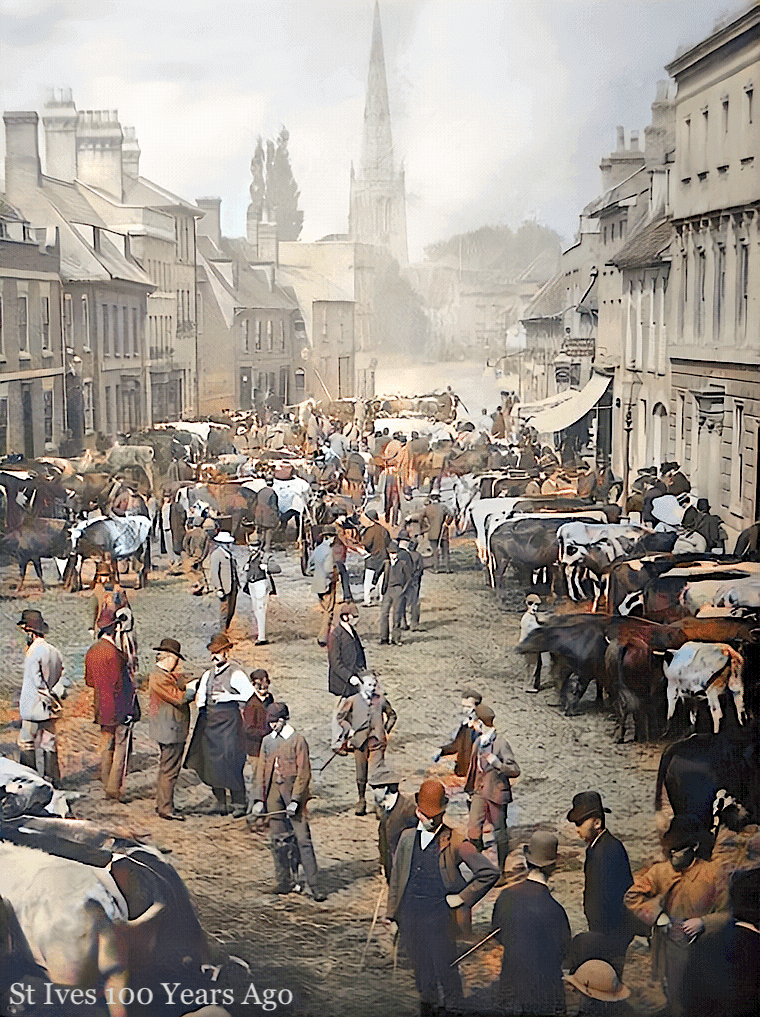The shop was a narrow, cold sort of room. Inside there was a slab upon which lay the great white folds of tripe, and the grey flocculent stuff known as ‘black tripe’, and the ghostly translucent feet of pigs, ready boiled. Mr. Brooker was a dark, small-boned, sour, Irish-looking man, and astonishingly dirty. I don’t think I ever once saw his hands clean. As Mrs. Brooker was now an invalid he prepared most of the food, and like all people with permanently dirty hands he had a peculiarly intimate, lingering manner of handling things. If he gave you a slice of bread-and-butter there was always a black thumb-print on it. Even in the early morning when he descended into the mysterious den behind Mrs. Brooker’s sofa and fished out the tripe, his hands were already black. I heard dreadful stories from the other lodgers about the place where the tripe was kept. Blackbeetles were said to swarm there. I do not know how often fresh consignments of tripe were ordered, but it was at long intervals, for Mrs. Brooker used to date events by it. We lodgers were never given tripe to eat. At the time I imagined that this was because tripe was too expensive; I have since thought that it was merely because we knew too much about it. The Brookers never ate tripe themselves, I noticed.
Tripe is a cheap and nourishing food. Made from the muscle wall of a cow's stomach, supply can come from other ruminants such as sheep and goats. Served undercooked tripe, you'll never try it again. It is tough as old boots. Tripe bought from a shop has already been boiled for ten minutes. Simmering for an hour or two makes tripe edible. It is bland in taste, traditionally flavoured with vinegar and pepper, or served as tripe and onions. Today it's more likely to be served up for pet food.
Preparation of tripe
Stomach linings collected from the local slaughterhouse are full of impurities and undigested food the animal has eaten. A scrubbing brush removes the stomach membrane. Remaining fat is trimmed away. Tripe is then soaked in a weak solution of bleach. The colour changes from its natural light brown or green to a pale hue, almost white. There follows a thorough rinsing in water to remove any trace of bleach.
St Ives tripe
There was plenty of source material to provide tripe to the residents of St Ives in the 1800s. Every Monday, over 12,000 beasts attended the livestock market. The Bullock Market (today the Broadway) sold cattle. They queued up Ramsey Road and into St Audrey's Lane. Many were destined for Spitalfields Market in London. Some found their way to St Ives slaughter houses, part of a butcher's premises and home. In 1854, there were 13 butchers in St Ives, supplying a population of 3,000.
 |
| St Ives Bullock Market, early 1880s. |
Tripe was in plentiful supply, most ending up as animal food. Only the poorest St Ivians ate tripe. And Elizabeth Askew was ready to supply tripe. She lived in Nicholl's Yard, which became Nicholl's Lane and probably Nicholas Lane. This was an overcrowded part of the town. The houses in nearby Green Street were jerry built, already slums when new some time before 1820. It's likely Elizabeth's accommodation was no better.
Born in 1801, Elizabeth married John Askew, an agricultural labourer. The pair produced children at a prodigious rate. By 1841, they had seven aged from 15 years to 1 month. Another arrived in 1843, Eliza.
John died in 1850. Elizabeth had five children still at home. So she worked at a job she could do from home. An occupation no one else in St Ives wanted to engage in, supplying tripe. Stomach linings were hauled back from slaughterhouses in a cart. Cleaning and boiling most likely took place in the yard outside Elizabeth's home. Not a nice place to be when it took place. The stink was unbelievable. But Elizabeth had a family to take care of.
By 1861, Elizabeth had only her youngest daughter Eliza at home, aged 16 years. Eldest daughter Elizabeth was visiting from Islington, with her sons aged 1 year and 1 month.
Eliza, aged 27 years, was still at home with her mother in 1871. Aged 69 years, Elizabeth still sold tripe. Previous census returns asked Whether blind, or deaf and dumb. For the first time, the 1871 census added the question Imbecile or Idiot, Lunatic. Eliza was described as Idiot from birth. After her husband died in 1850, Elizabeth had a disabled daughter to care for. This explains her need to work from home.
In 1881, aged 80 years, Elizabeth had finally retired. Her occupation was late tripe seller. Eliza, aged 37 years, was described as Imbecile.
Elizabeth died some time after 1881. With no one to look after her, Eliza went into the St Ives Union Workhouse. In 1891, her occupation was Laundry work. Eliza was again shown as Imbecile, one of eight so described in the Workhouse.
 |
| 1834 plan of St Ives Union Workhouse. |
The 1901 census describes Eliza as Imbecile from birth. Yet the 1911 census shows her occupation as Domestic servant. There's no mention of infirmities. Maybe in her last years, Eliza found her calling.
The last echo of Eliza is from the 1915 Huntingdonshire Post report Christmas Among the Poor. This was about Christmas festivities at the Workhouse. The article describes Eliza as follows.
Perhaps forgotten by a good many, but well known in their generation, smiling a welcome as one approaches.
Eliza died in the workhouse in 1916, aged 73 years.


No comments:
Post a Comment